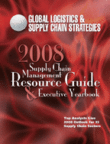
Visit Our Sponsors |
|
|
|
|
|
|
|
|
|
|
|
|
|
|
|
|
|
|
|
|
|
|
|
|
|
|
|
|
|
|
|
|
|
|
|
|
|
|

Analyst Insight
Different products have different costs and lead times. For example, a customer who requires a custom part from a manufacturer on a build to order basis will have different service requirements as compared to a customer who sells a commodity part built to stock. Thus, segmentation of the customers based on their inventory management requirements is necessary.
-Nari Viswanathan, research director at AberdeenGroup
The focus on customers is key to customer relationship management excellence; however, the key tenet of supply chain management is to get as close to the source of true demand as possible, namely the customer. Hence there are significant areas of opportunities for innovation by integrating customers with the supply chain.
Some of the key areas of interfacing between CRM and SCM are:
• Focus on customer service levels. Best-in-class companies systematically analyze their markets by profiling their customers' buying behavior, and understanding their customer expectations. This is then used to optimally position supply when and where it is most needed and most profitable. Through strategic segmentation of customer channels and products, these companies reap significantly higher ROA than their competitors.
• Integrating sales opportunity forecasts with build forecasts. There is a need to provide proactive visibility to sales opportunity mismatches with operational plans. This improves the demand shaping (promotions process) and reduces investment in last-minute incentives and last-minute rush or overtime production to accommodate sales target increases.
• Configure to promise. In a configure-to-order environment, there is an opportunity to link the configuration process at the sales and marketing level with the supply chain. End customers, channel partners or retailers can get capable-to-promise information with due dates and pricing while creating configurations for sales orders.
• Demand sensing at the customer. Retail environments are constantly evaluating ways by which demand signals can be accurately captured and transmitted to corporate merchandise planners at retailers as well as account teams at CPG companies.
The Outlook
Aberdeen research finds that there is increasing traction in the market with sales opportunity forecasting and its linkage with the build forecasts. Manufacturing companies are in the middle of this activity. In the consumer industry sector, focus on the customer will continue to be a top focus with point-of-sale systems, store level forecasting and other retail centric applications.
RELATED CONTENT
RELATED VIDEOS
Timely, incisive articles delivered directly to your inbox.






